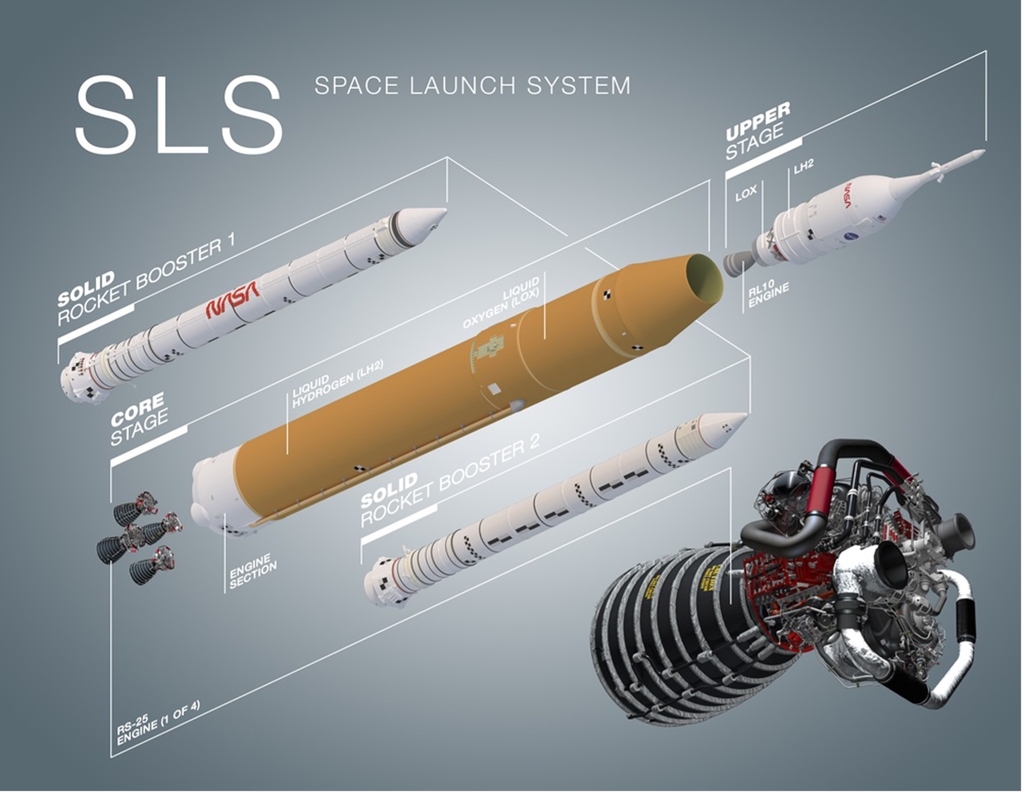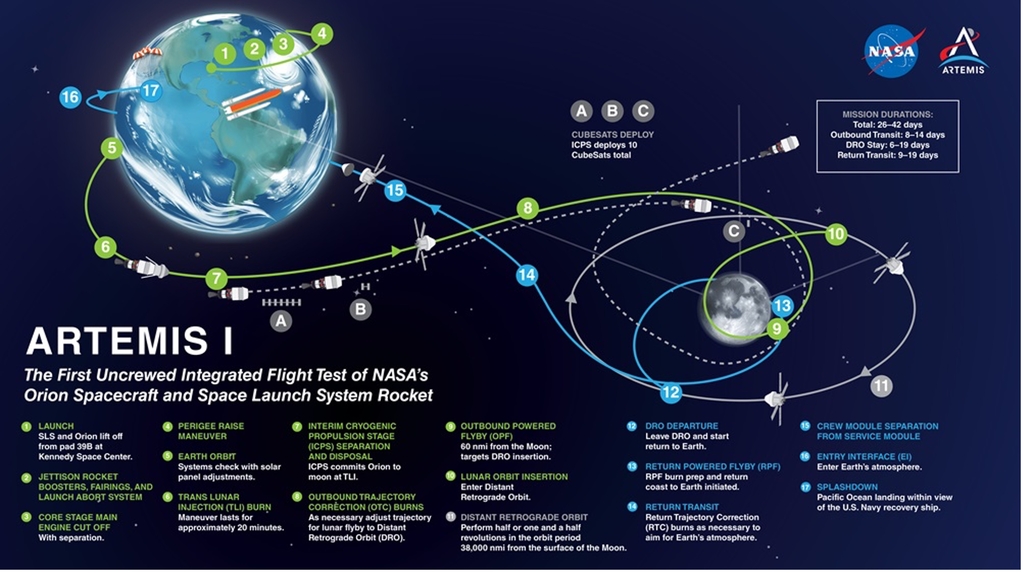The Artemis 1 Mission: the Moon to Mars

It has been five decades since humankind made their first footprint on the moon, and now NASA is planning to return starting with the Artemis 1 mission. This is the first in a series of planned missions, being followed by Artemis 2 and 3 which will hopefully land the first woman and person of colour onto the lunar surface in 2025.

The mission will be the first launch of NASAs ‘mega moon rocket’, the Space Launch System (SLS) which is the largest and most powerful rocket constructed since the Saturn V rocket of the Apollo program. The current configuration known as Block 1 comprises of a core booster field by liquid hydrogen and oxygen with two solid rocket boosters mounted on the sides in a similar arrangement to the space shuttle, however the difference is that this rocket can produce 8.8 million pounds of thrust. The super rocket stands at 322 feet tall with its spacecraft Orion at the tip, and can transport 27 tons of payload to the moon.
What is Orion? This is the capsule that will ultimately take astronauts to the moon, and is a larger version of the Apollo space capsule allowing room for an extra astronaut with much more modern technology used for computer and navigation. Orion is equipped with a heat shield which it will use when re-entering the Earth’s atmosphere along with parachutes to reduce its speed before splashing into the Pacific. Aboard the spacecraft will be a set of full and partial mannequins that carry sensors to monitor the impact of radiation on astronauts when they take the mannequins places in just a few years.

Artemis 1 will last 42 days, with SLS launching Orion towards the moon to perform a flyby on the 6th day where it will reach 60 miles above the lunar surface. Along the way to the moon 10 CubeSats will be released to collect various data, with research targets ranging from studying lunar water ice to measuring deep space radiation. Artemis 1 will enter a much wider orbit than previous Apollo missions known as a distant retrograde orbit (DRO) on day 10, meaning that the spacecraft orbits in the opposite direction to the moons orbit of the earth. It will stay in this orbit for 16 days, completing 1.5 orbits around the moon and reaching the farthest point in space a human-rated spacecraft has ever been!
Following the DRO, a small space station called the gateway will be positioned in a looping orbit called a near-rectilinear orbit. This will act as an outpost for Artemis crews to transfer from Orion to a landing craft, a modified SpaceX Starship. Once Artemis 1 finishes 1.5 orbits it will reach the most crucial point in its journey- its return to Earth. This is important since Orion will be travelling faster than any crewed spacecraft before, so it is vital that the deployment of the heat shield is successful and that it makes a safe descent back to earth’s surface before letting humans on board.
Although going back to the moon may seem pointless to many people, it is part of a much bigger plan for NASA: visiting Mars. The Martian planet has had much speculation in the past about inhabiting life, and could now possibly be the next place for humans as NASAs long term goal is a crewed mission to mars in the early 2040s. The moon is being used as a training ground for studying how humans can live off the land in an environment vastly different to earth with high radiation levels. The lead up to the Mars launch will see crewed missions fly to the lunar surface once a year for the remainder of the decade, building a space station in lunar orbit and a base on the lunar south pole where astronauts will test technologies and skills needed for the mission to Mars.
However, it hasn’t been an easy journey so far as NASA has been struggling with getting the spacecraft off the ground. The initial launch on the 29th of August was scrubbed after unexpected problems with one of the rocket engines- due to the conditioning process used to thermally insulate the four engines, one failed to maintain proper cooling. Their second attempt on the 3rd of September was also called off after repeated tries to correct a leak of super cooled liquid hydrogen propellant which couldn’t be fixed. For now, NASA has pushed back the launch to at least late September. Let’s hope that the next launch will be successful and the start of a long journey to put humans on Mars.
--
Cover image: NASA
Image credits:
- NASA
- NASA
